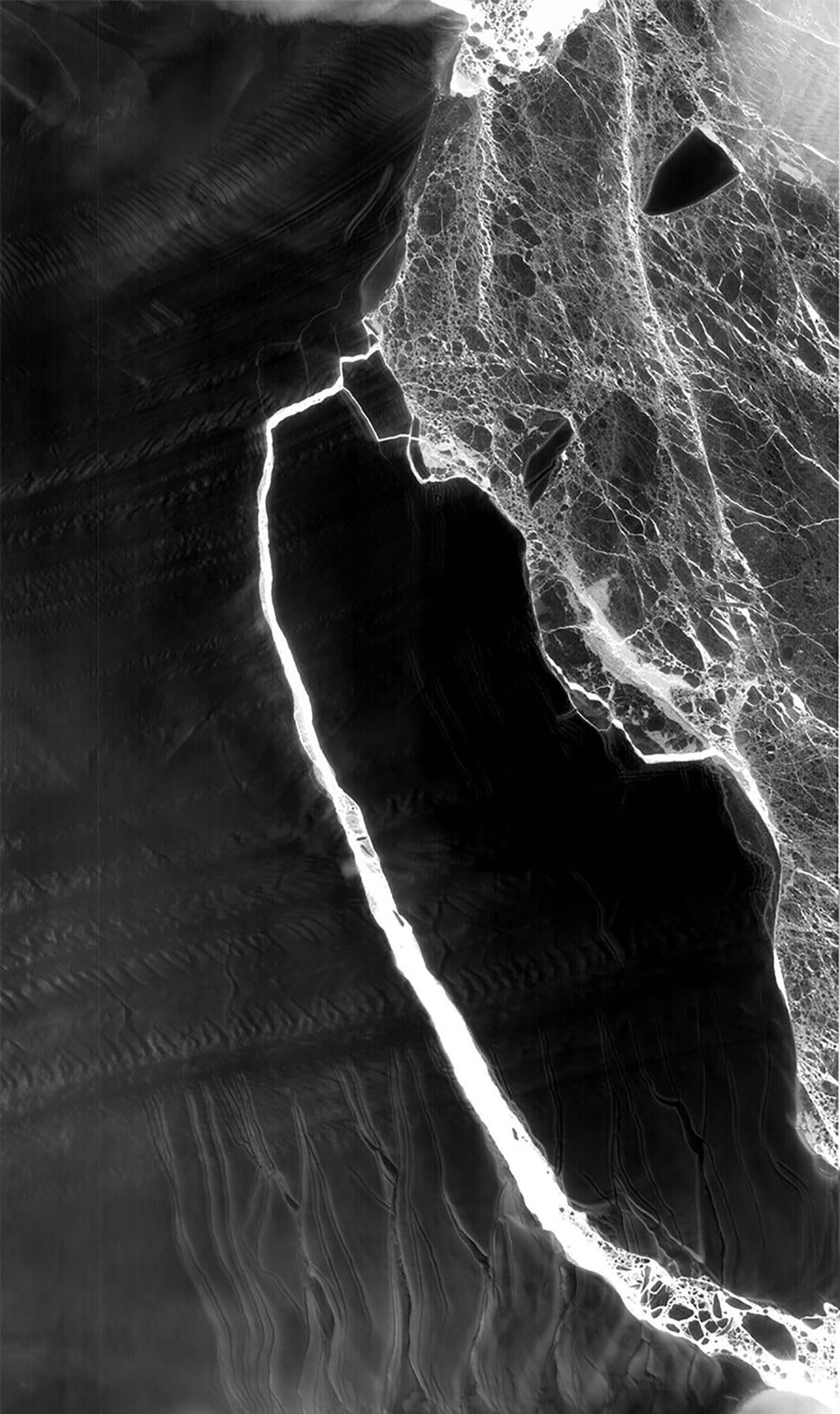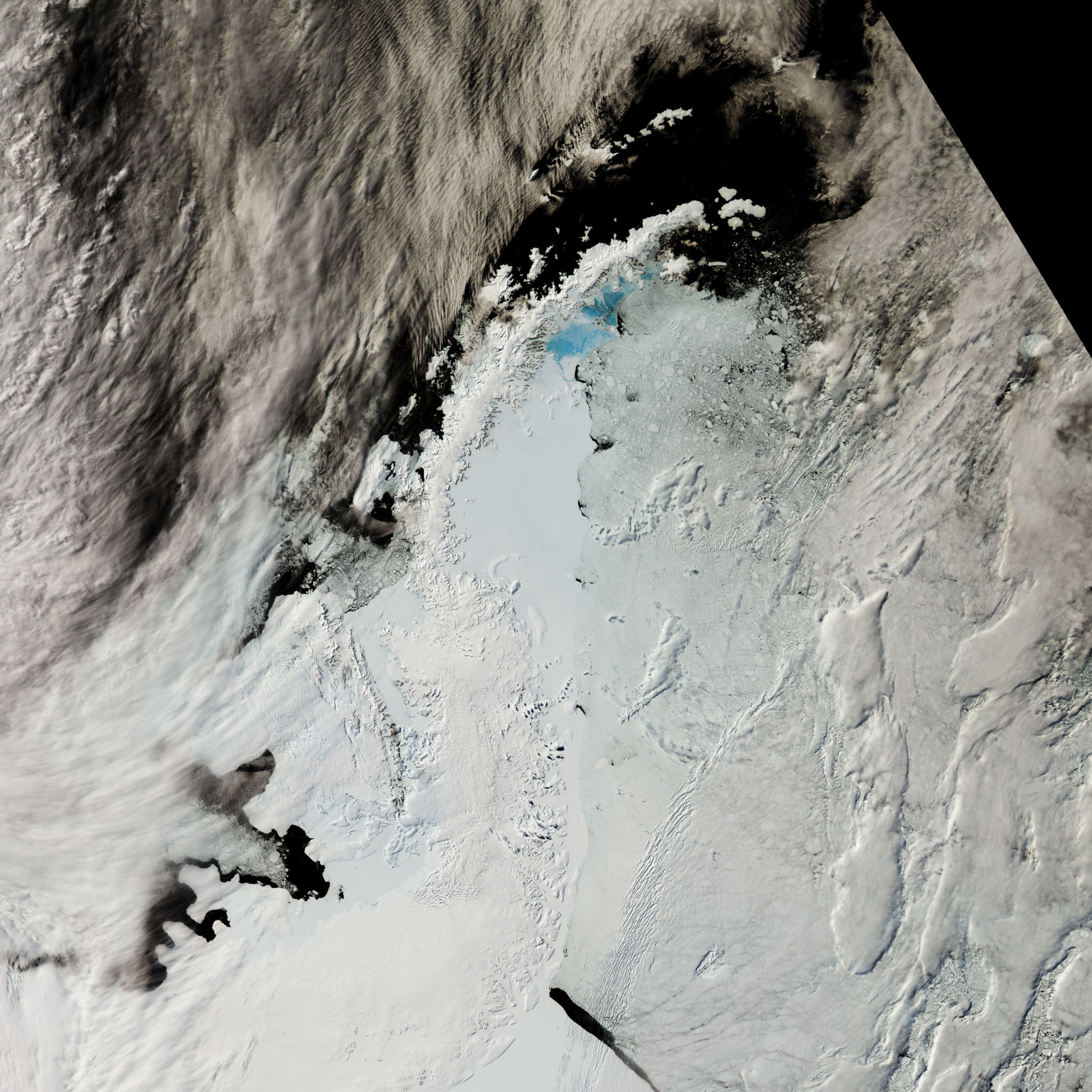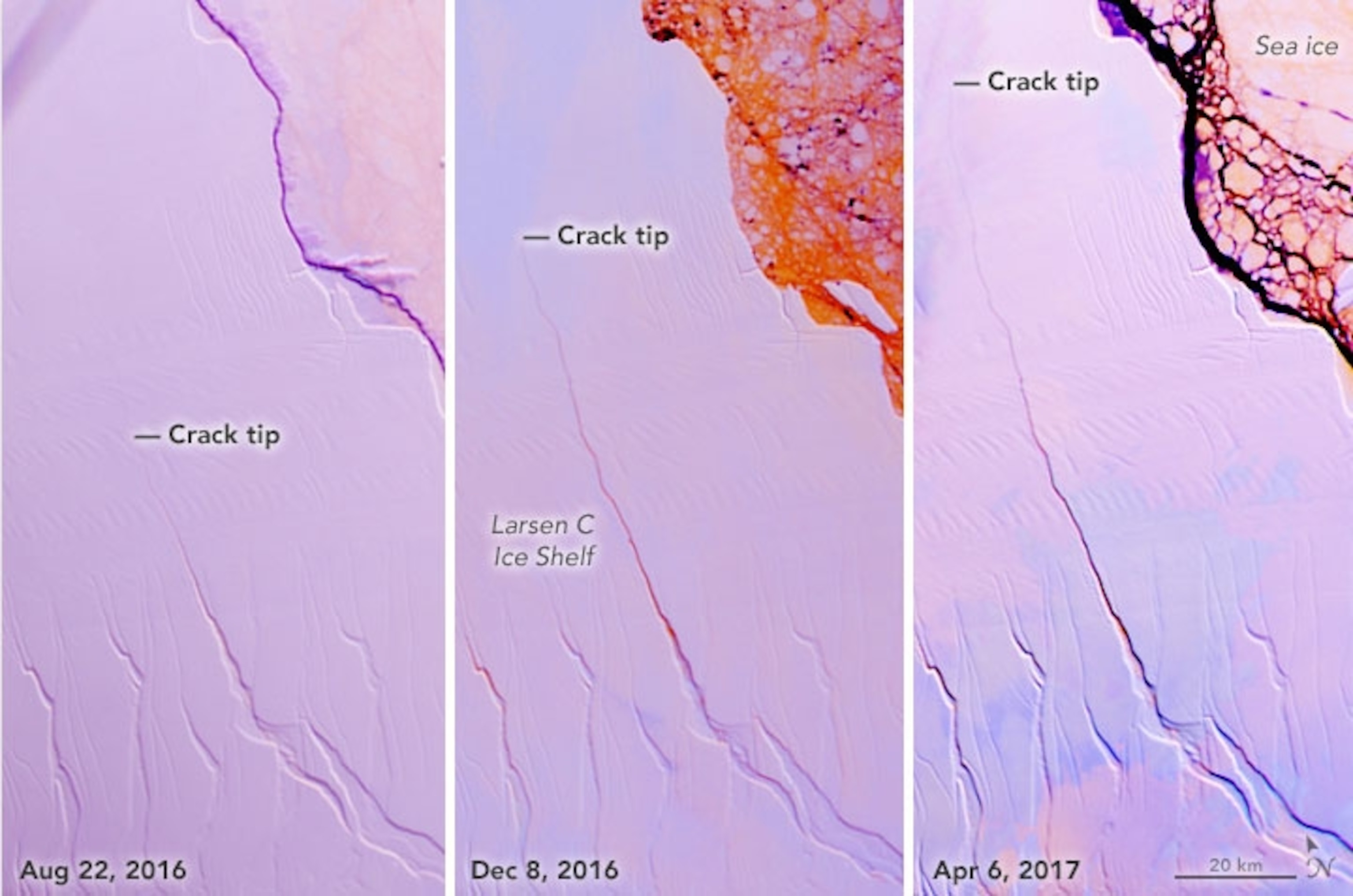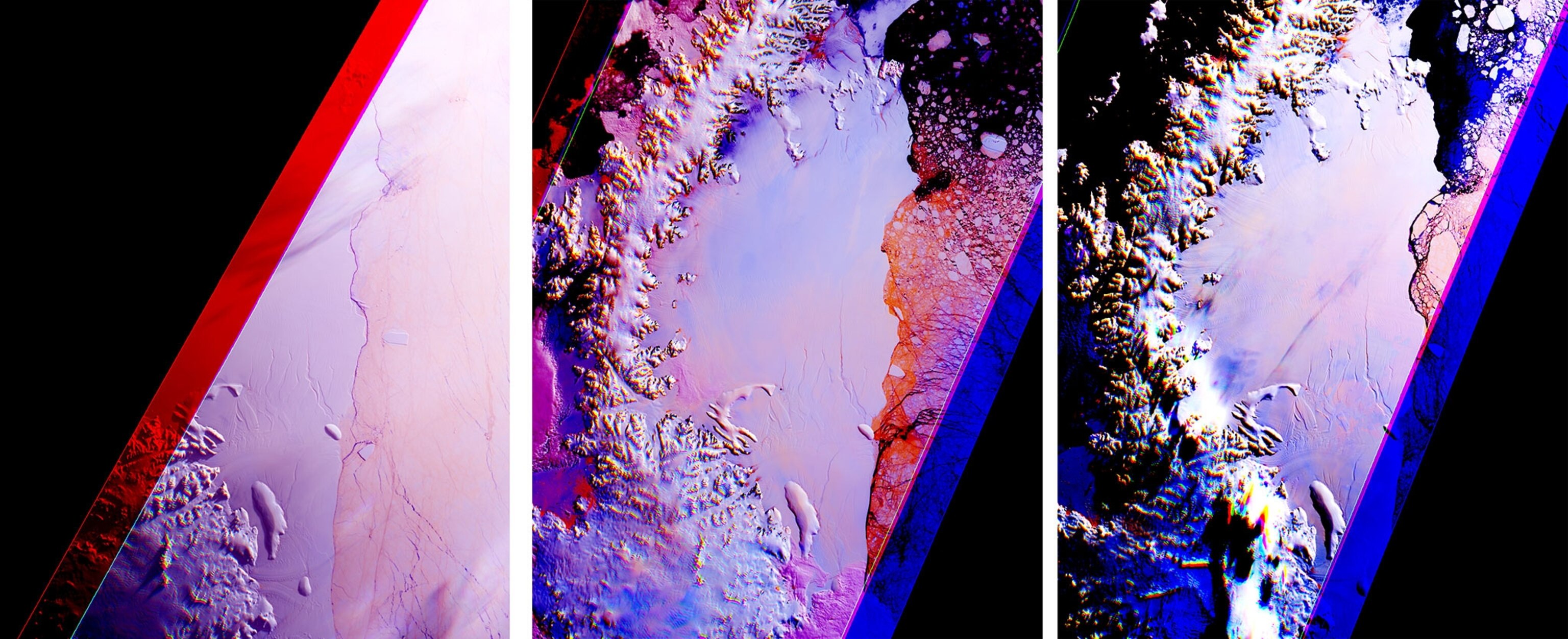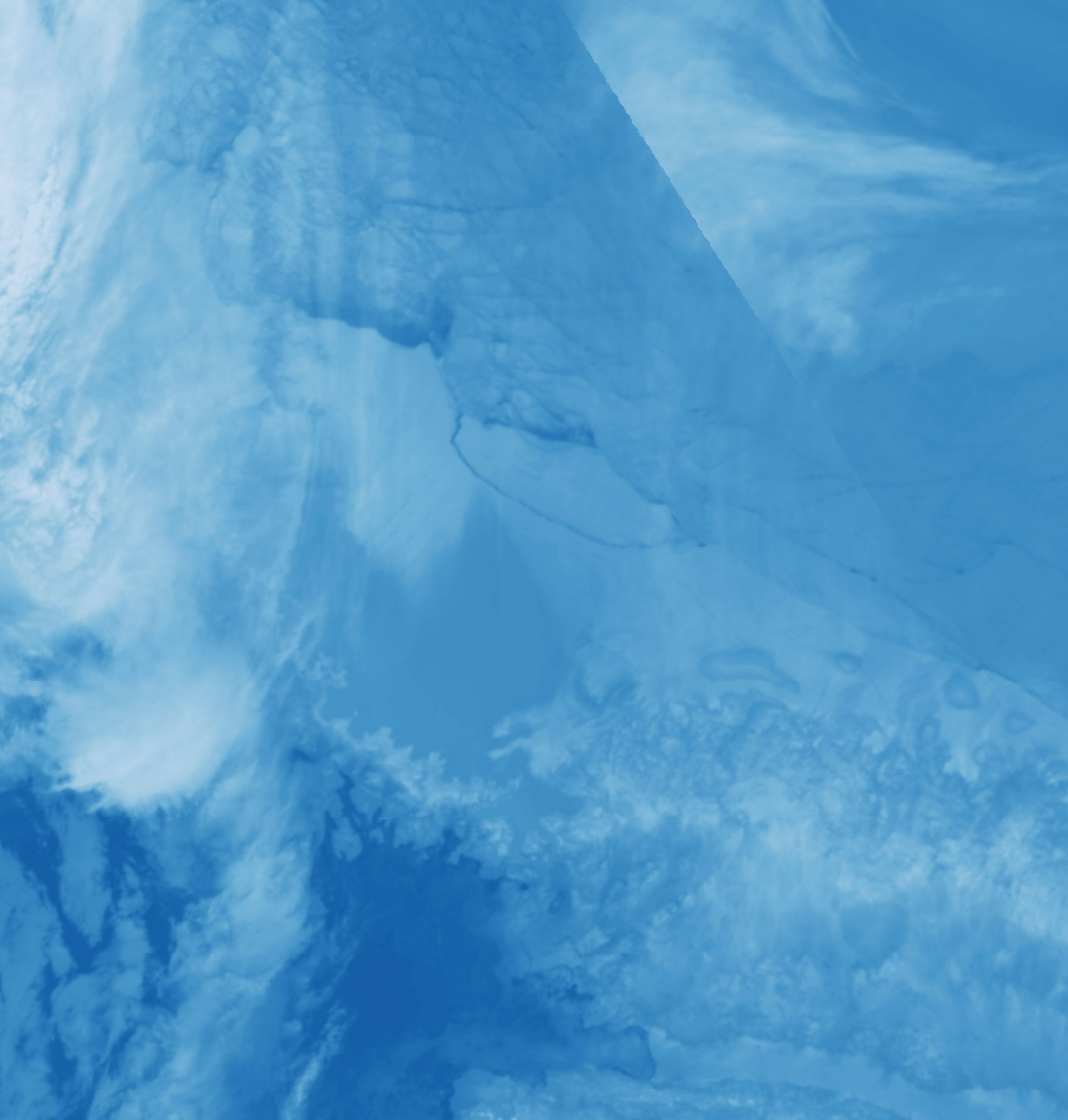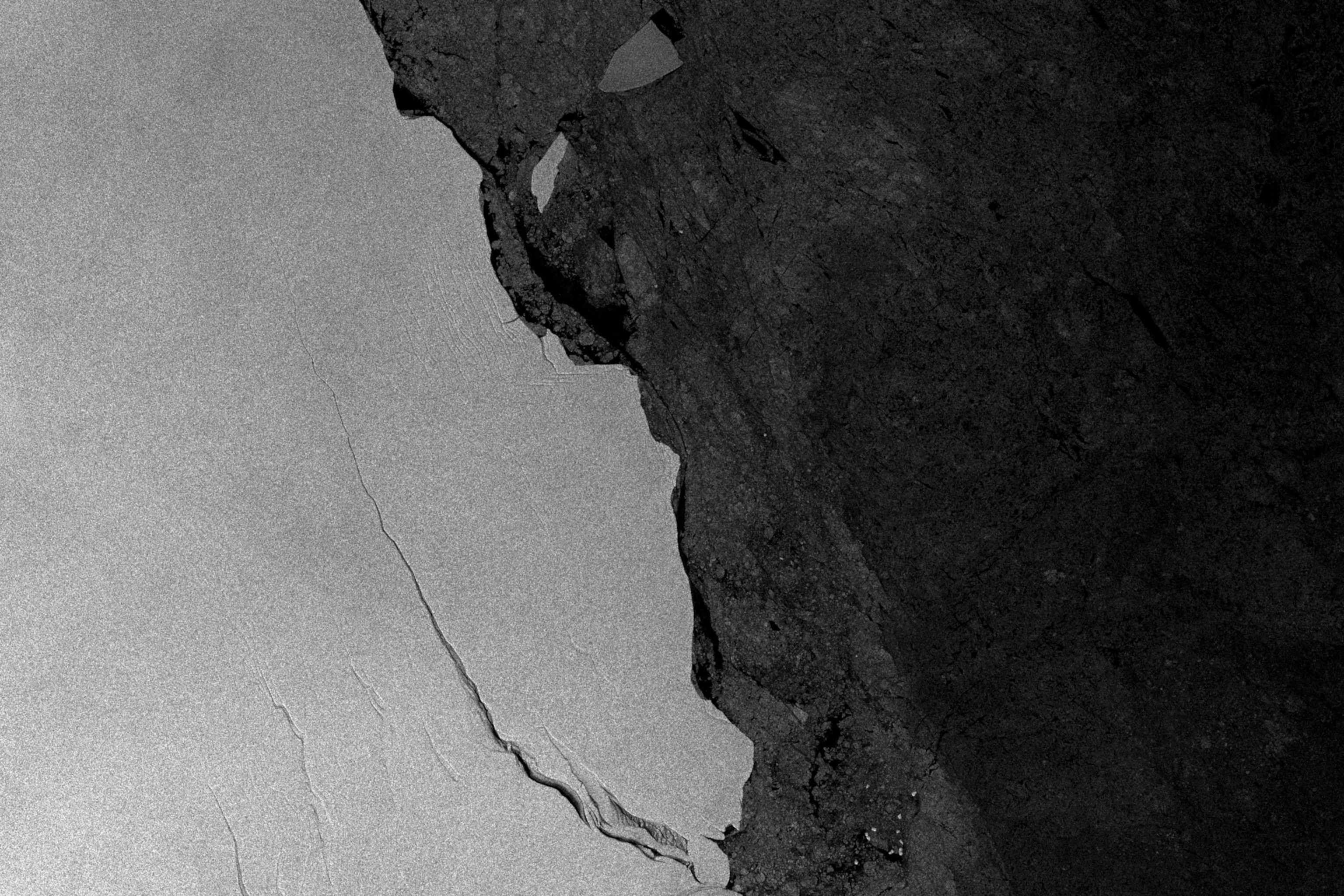Nighttime Pictures Reveal Antarctica's Cracking Ice Shelves
Using satellite images, NASA keeps an eye on the region's shifting ice even during the total darkness of polar winter.
You could call it the crack heard 'round the world.
For years, scientists had been monitoring the Larsen C ice shelf in Antarctica, watching as an enormous rift in the ice grew in fits and starts. Then, on July 12, one of the largest icebergs in history broke off the shelf. (See maps that show the decades-long decline of Larsen C.)

Now known as A68, the massive iceberg has completely separated from Larsen C. But for scientists concerned about polar melt, their work is only beginning. Keeping a close eye on A68 and other icebergs in the Weddell Sea is important for understanding the global effects of climate change.
There's just one problem: It is currently winter in Antarctica, and it's totally dark.
Due to a combination of Earth's orbit and tilt, Antarctica technically has only two seasons—winter and summer. Six months of the year Antarctica is on the sunny side on the globe, and for the other six months it is shrouded in darkness.
So NASA scientists have deployed a special instrument on their Landsat 8 satellite that allows them to monitor the situation no matter the season. Instead of relying on visual light, the Thermal Infrared Sensor, or TIRS, is able to capture pictures by measuring the differences in temperature between the water and the ice.
"Like you or I, taking pictures with our cameras at night is hard. In order to broaden the sensitivity, Landsat is equipped with the thermal sensor for emitted energy,” says Christopher Shuman, a research scientist at NASA's Goddard Space Flight Center.
“These images have allowed us to see the evolution of the rift and also the scale of the iceberg that has been released while the area is in polar darkness.”
Seeing in the Dark
TIRS images are either in grayscale or are colorized for emphasis. Warm colors like purple and yellow represent the comparatively warm ocean water surrounding the cooler blue ice shelf.
When the A68 iceberg actually broke off, scientists couldn't pinpoint down to the second when it happened.
“We had to look for suggestions in the thermal data that the iceberg had calved,” says Shuman. Thermal images were ultimately able to confirm the iceberg and the shelf were fully separated.
The temperature of the ice and water changes on a daily basis, but the satellite frequently makes the same passes overhead, so these changes can be closely and accurately monitored.
Using these tools, NASA scientists can see that since the big break, A68 and the other icebergs have been moving around at different rates due to storms and currents in the Weddell Sea. The images also show also some potential new rifts forming in the Larsen C ice shelf that could threaten its stability.
When the sun comes back to Antarctica later this month, Landsat 8 will again be able to use its high-resolution imager to keep an eye on the ice from above.
“We are continuing to watch and continuing to monitor, when the weather allows,” says Shuman.

